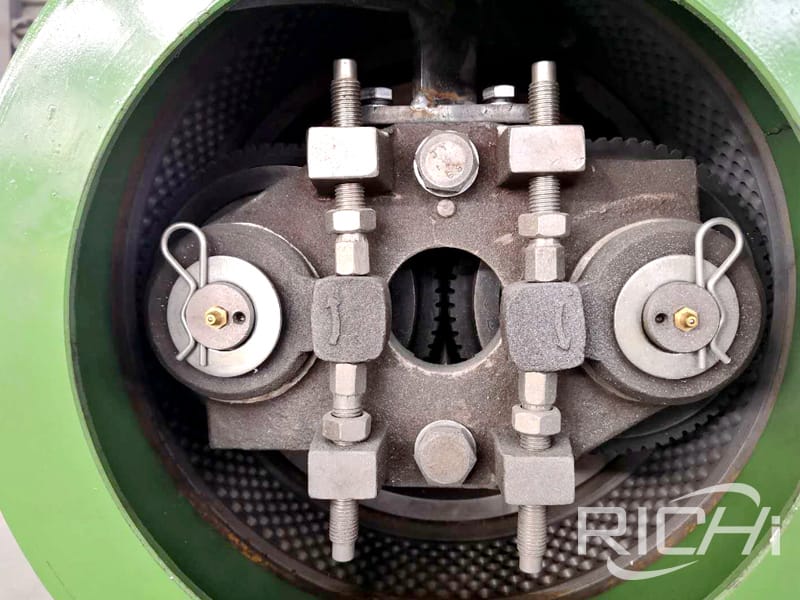What is the processing process of a general biomass pellet mill line? Take the most common processing of wood pellets in biomass as an example, wood chip-wood chip crushing-wood chip drying-wood chip granulation-wood pellet cooling-wood pellet packing. This is the most common process of biomass pellet manufacturers, but Do granules need additives? It must be said that some manufacturers do use additives in the processing of biomass pellets.
Additives for biomass pellet production are materials added during pellet production to improve the bonding characteristics of the biomass to produce durable high quality pellets.

1.Function of additives in pellet production
(1)Additives are used in pellet production for better bonding, lubrication or to decrease combustion problems.
(2)Binding agents have been investigated and used as a means to increase fuel pellets’ durability, thus reducing the dust and fines generated during their transport and handling.
(3)When strength, durability or heating values of pellets do not meet quality standards or marketing requirements, additives may be added to the feed to increase the pellet quality or to minimize the pellet quality variations.
(4)Increase pellet production capacity by lubricating the pellet die.
(5)Lower energy consumption and improving the pelletizing effect.
2.Factors influences bonding effect
During pellet production , what will influence the bonding effect and eventually influence the durability of the pellets. Some of the major factors are listed below for your sake.
(1)Feedstock composition
Naturally, the composition of the biomass material directly influence the bonding effect. High lignin content biomass can be easily molded into pellets because of lignin are the natural binders. Low lignin content biomass should have binders added to achieve a better bonding effect.
(2)Pellet size
When the feedstock is compacted, the distance between the particles is reduced and the intermolecular attractive force play a role in the particle bonding. Commonly, the attractive forces is increased as the particle size is decreased.
(3)Temperatures
High temperatures produced during pelletization would partially melt the biomass constituents, which helps particle molecular diffusion and would form solid bridges when cooled down.
(4)Moisture
Proper moisture may help to increase the bond within the pellets by spreading the natural lignin, the inborn binder, evenly within the pellets and increase the compression in the die holes of pellet die. However, too much moisture may lower the bonding strength and even block the pellet die holes.
(5)Pelletizing pressure
Mechanical pressure casted by pellets mill are one of the major factors that influence bonding effect. Higher pelletizing pressure will result in better bonding effect.
3.What are the common binders in biomass pellet production
A binder can be a liquid or solid forming a bridge, film, or matrix, or to cause a chemical reaction imparting enhanced inter-pellet bonding. Examples of possible bonding agents for wood pellets include starch, molasses, natural paraffin, plant oil, lignin sulfate and synthetic agents.
(1)Starch
Bonding agents (from corn or rice) can also be used to decrease abrasion. Small amount of starch, less than 2 percent by mass, increase pellet strength. The most common starches are derived from potatoes and corn. A cost benefit analysis must be performed to determine if, and how much, starch should be used. This sort of addition is common in Austria, a leading country in the utilization of biomass pellets. However, numerous other factors determine the overall level of abrasion.
(2)Lignin
Lignin acts as a binder in situ in the feed material, although it can also be added as a binder—obtained as by-product of the pulp and paper industry. At elevated temperatures, lignin softens and helps the binding process. There is a threshold to the advantages of adding lignin, however. Levels above about 34 percent in wood tend to decrease durability.
(3)Fiber
Fiber can be classified as water-soluble and water-insoluble fibers. Water-soluble fibers increase the viscosity of the feed and positively affect the structural integrity of the pellets. Water-insoluble fibers may entangle and fold between particles or fibers. Increasing the crude fiber content from between 18 to 27 percent increases the durability of alfalfa pellets by about 5 percent. Other potential additives to improve pellet quality include hydrated lime and pea starch.
(4)Lime
Biomass combustion appliance manufacturers often recommend the addition of lime (CaO) to reduce clinker formation and slagging. Limestone creates a chemical compound such as CaSO4 which has a higher melting temperature, thus stays in the bottom ash. Limestone also has the added benefit of reducing HCl formation.
Tips:
The potential pellet plant operator should be mindful that the use of certain binders is prohibited in top European markets. In Austria, biological additives rich in starch content, such as corn and rye flour, of only 2 percent by weight are allowed for use in wood pellet production. Under the German emission control legislation only molasses as a residue from sugar production, natural paraffin or starch are allowed. Apart from increasing the product's hardness, it is also conceivable to use additives in order to improve certain chemical characteristics—for example slag formation during combustion can be mitigated by using kaolin or calcium and magnesium oxides.
Therefore, we hope that every customer understands that the use of biomass pellet additives must comply with the policies of your region, and at the same time, we should explore the processing technology of biomass pellets to keep the biomass pellets with many excellent characteristics. For more information on biomass pellet processing technology, processing equipment and other issues, welcome to consult Richi Machinery!


